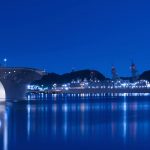
The tiny nation of Brunei (officially Negara Brunei Darussalam or the Nation of Brunei, the Abode of Peace) is located on the island of Borneo, which is otherwise divided between Indonesia and Malaysia. With a total population of less than 500,000, Brunei is one of the richest countries on earth from a per capita perspective.
Industry is not the driving force of the country’s economy; hydrocarbons, the energy-rich waters off Brunei’s shores in the South China Sea, have provided nearly all of the oil and gas exported to larger Asian economies, particularly Japan, Taiwan and South Korea.
Despite its location in southeast Asia, Brunei has more in common with the tiny kingdoms of the Persian Gulf than with its neighbors. An absolute Islamic monarchy, the nation’s wealth comes from Brunei’s ability to export the vast majority of its production due to the relatively small amount of consumption necessary to fuel its domestic population. But unlike Persian Gulf states like Saudi Arabia and Kuwait, Brunei has made its fortunes by working closely with Western companies — namely Royal Dutch Shell. Brunei’s history as a tiny but vibrant energy explorer has boosted its economic fortunes, especially after gaining independence from the United Kingdom in 1984. Aging fields and declining reserves are placing its status as a cornerstone of southeast Asian energy production in check, however, as production levels continue to plummet and the country’s growing population—thanks to two decades of rising economic development—demand more power and fuel. After peaking in 2006, oil production has dropped nearly 40%, and the sultanate is struggling to attract investment into its small and well-explored offshore production zones in the face of more attractive offers from larger neighboring energy players in Indonesia and Malaysia.



